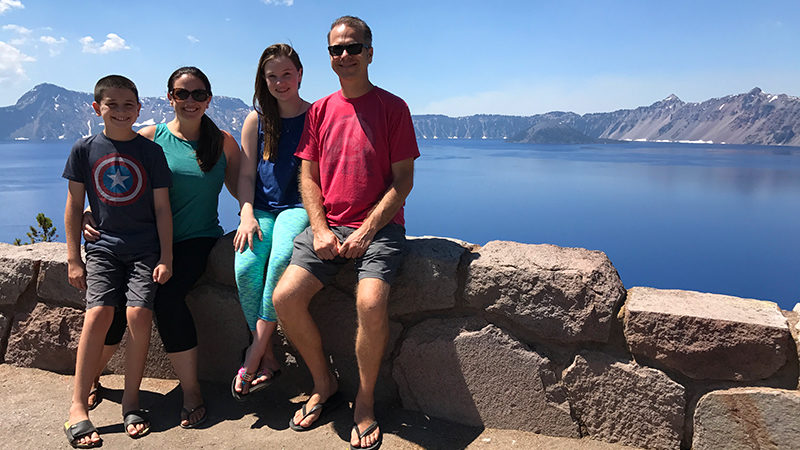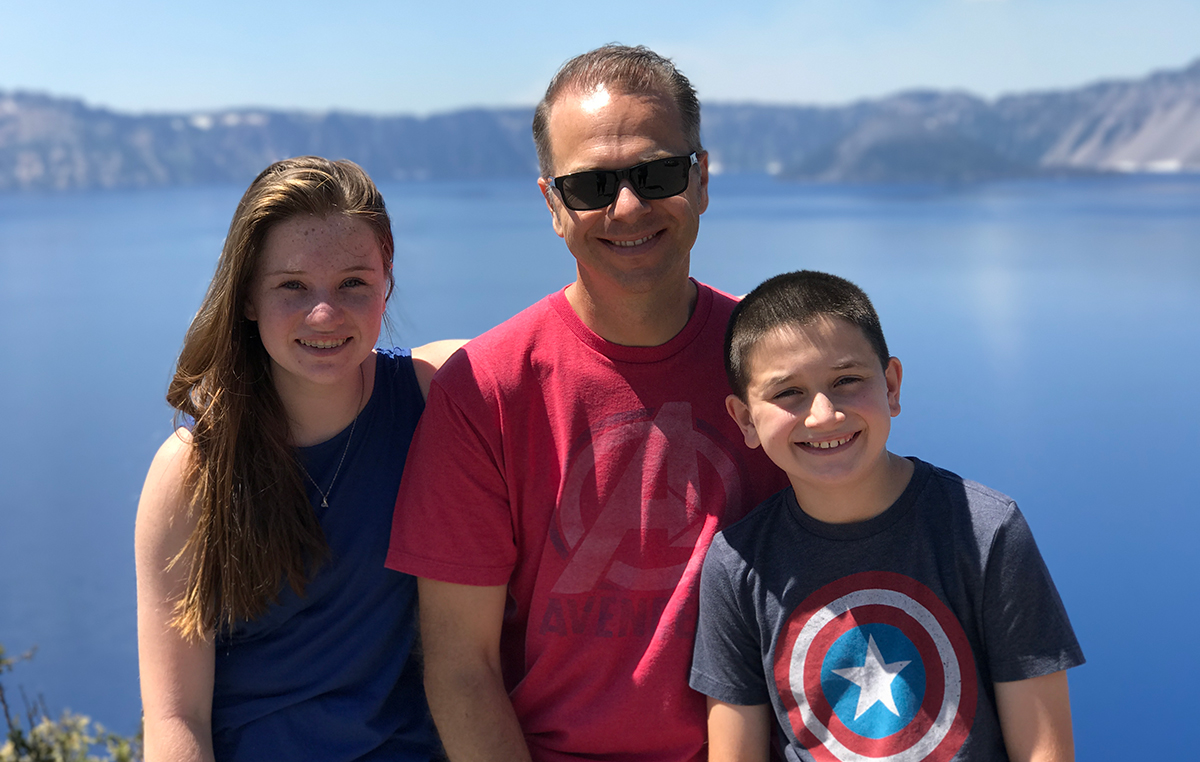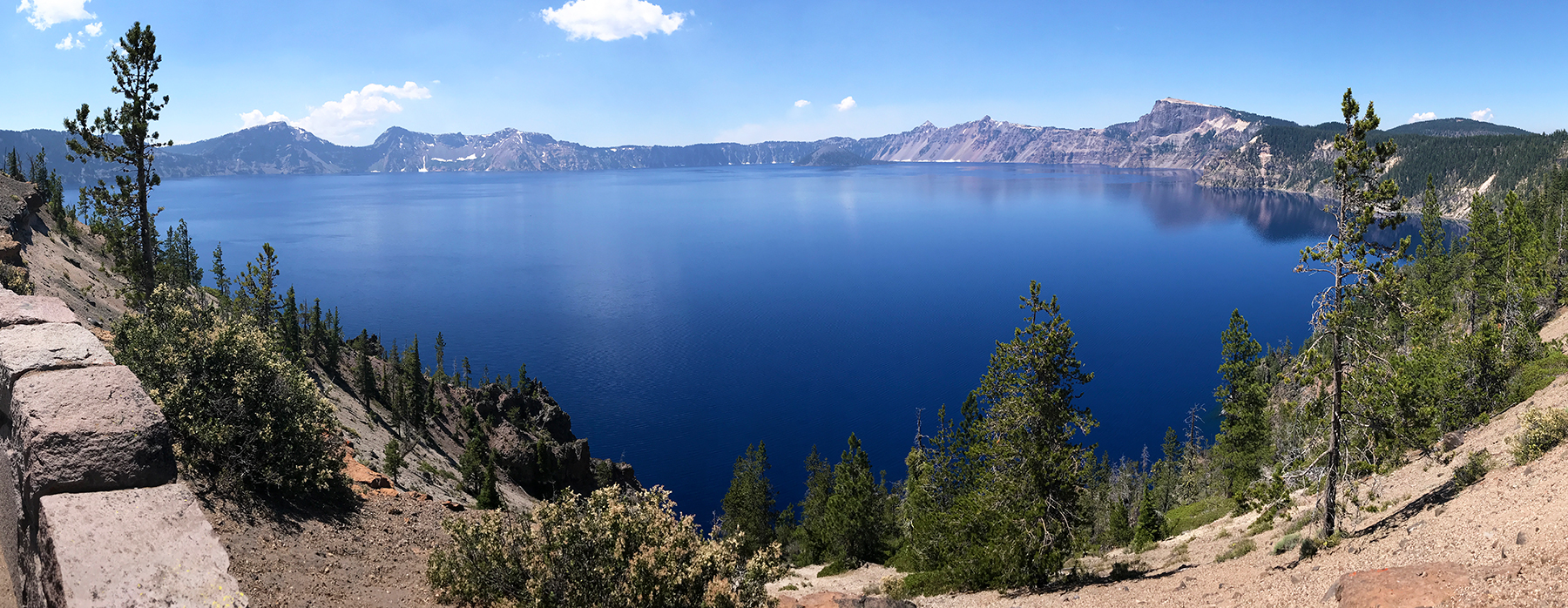
On this week-long road trip, we drove from Sacramento to Crater Lake National Park, followed the California Coast through Redwood National and State Parks, then cut inland to drive through Humboldt Redwoods State Park and Avenue of the Giants. We had a HUGE list sights to see and things to do, including driving the scenic Rim Drive around Crater Lake.
Circling the lake on Rim Drive, means stopping at lots of scenic viewpoints to take in the incredible panoramic views of Crater Lake, Wizard Island, Phantom Ship Island, and the surrounding mountains. We had stopped at Discovery Point, Watchman Overlook, Merriam Point, Llao Rock, Pumice Point, and even the pullout above Cleetwood Cove — the only spot that provides access to the waters of Crater Lake.
Most people stop at Cleetwood Cove to hike down to the water and take a guided boat tour. We didn’t have time for a several hour adventure on this trip, so we settled for the stunning view from the roadside of the cove and it’s forested point, Palisade Point.

At 507 feet elevation, Palisade Point is the lowest point on the rim of Crater Lake. Palisade Point marks the east side of Cleetwood Cove. The low-walled overlook sits atop the point and provides sweeping views of Crater Lake that include Llao Rock, Hillman Peak, The Watchman, Garfield Peak, and with binoculars, Crater Lake Lodge and Sinnott Memorial Overlook.

The Formation of The Palisades
According to Crater Lake Institute, Palisade Point is made up of a thick sheet of andesite that rests on glacial moraines. The top of the Palisades near Palisade Point is extremely irregular, bristling with monolithic crags and traversed by deep, steep-sided fissures.
In the upper part of the Palisade flow, the jointing is closely spaced, curved, and almost vertical, while lower down, the vertical joints are farther apart and produce columnar structures, which give the flow its name. At the base, the lava becomes black and glassy

Know Before You Go
- Crater Lake National Park, Oregon’s only national park, does not have a physical street address, so it can be hard to locate us using GPS. We made the historic Crater Lake Lodge our first stop, which is located at 565 Rim Drive, Klamath Falls, Oregon 97604.
- At 1,943 feet deep, Crater Lake is the deepest lake in the United States and the principal feature of Crater Lake National Park.
- The 33 mile Rim Drive that travels around Crater Lake’s caldera features spectacular views of the lake and interpretive signage at all of the main vista points.
- Good for seven days, admissions fees are $30.00/vehicle, $25.00/motorcycle in the summer and $15.00/motorcycle in the winter, and $15.00/pedestrian or bicycle.
- The national park is open year-round, 24 hours a day but many of the park’s roads, trails, and facilities are closed seasonally.
- During periods of rain and snow, Crater Lake is often hidden by clouds — it is completely invisible about 50% of the time in the winter!
- Summers at Crater Lake are short but typically sunny. July, August, and September are your best bets for warm, dry weather. However, it can snow any day of the year.
- The park’s North Entrance is closed for about seven months each year. It closes at the first snowfall or on November 1, whichever comes first and reopens in early to mid-summer. The park’s South Entrance and West Entrance are open year-round. We visited the park in late July and the roads had only been open for a week!
- Crater Lake National Park has two visitor centers. The Steel Visitor Center at Park Headquarters is open every day except December 25 — 9:00 am to 5:00 pm from mid-April to early November and 10:00 am to 4:00 pm the rest of the year. The Rim Visitor Center at Rim Village is open daily from late May to late September from 9:30 am to 5:00 pm.
- Dogs on-leash are permitted in the park but only in developed areas and Mazama Village and Lost Creek Campground. Dogs are not permitted on any trails or in undeveloped areas.